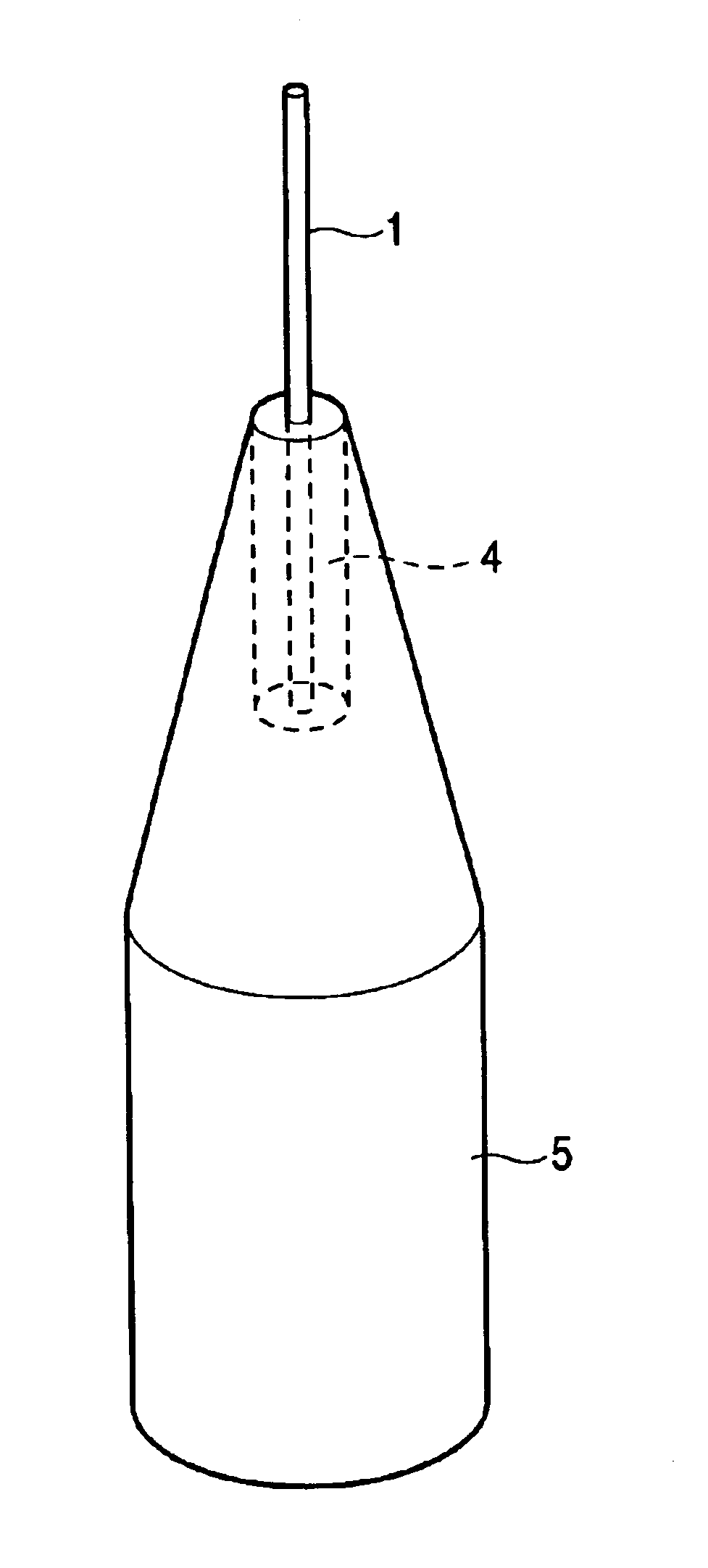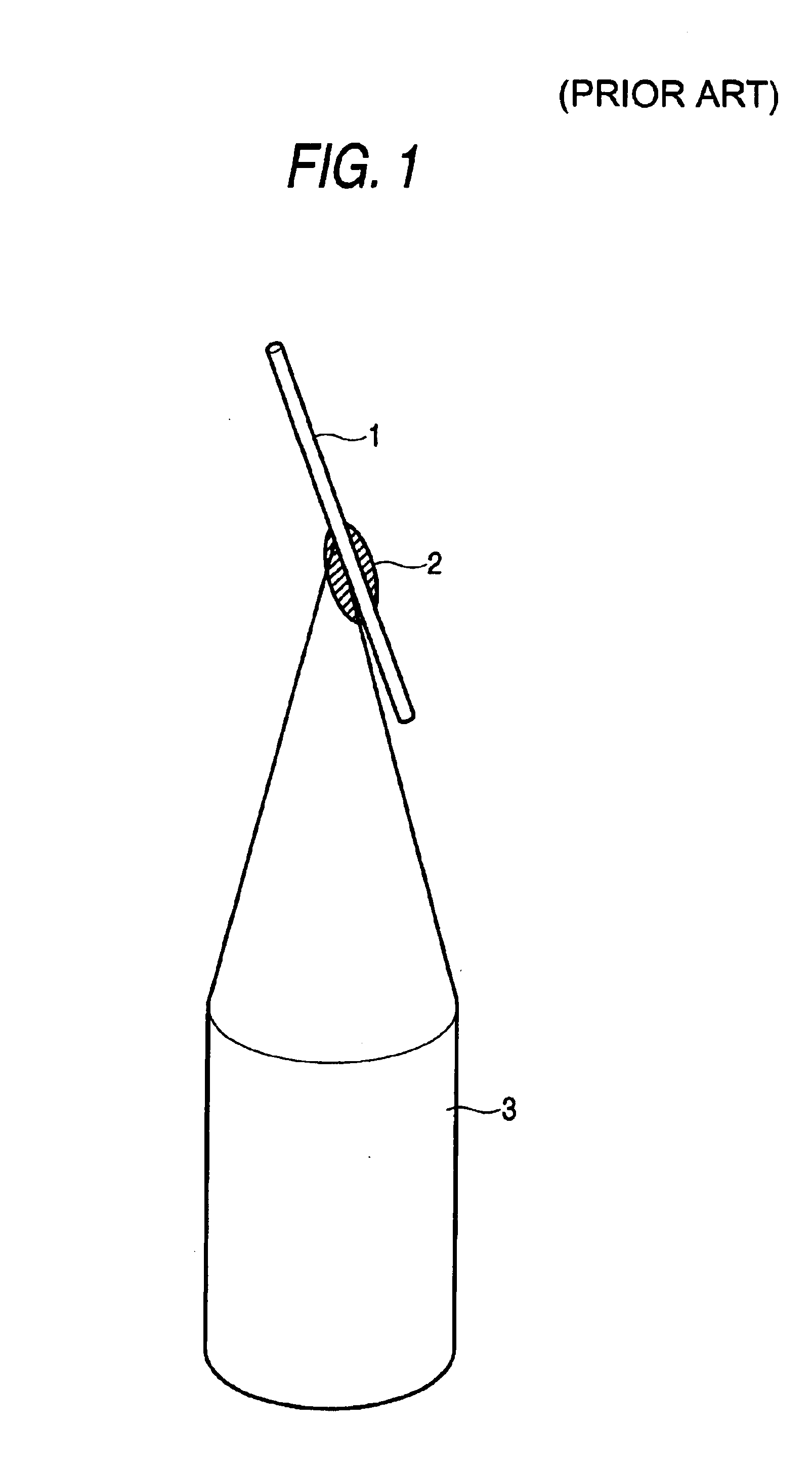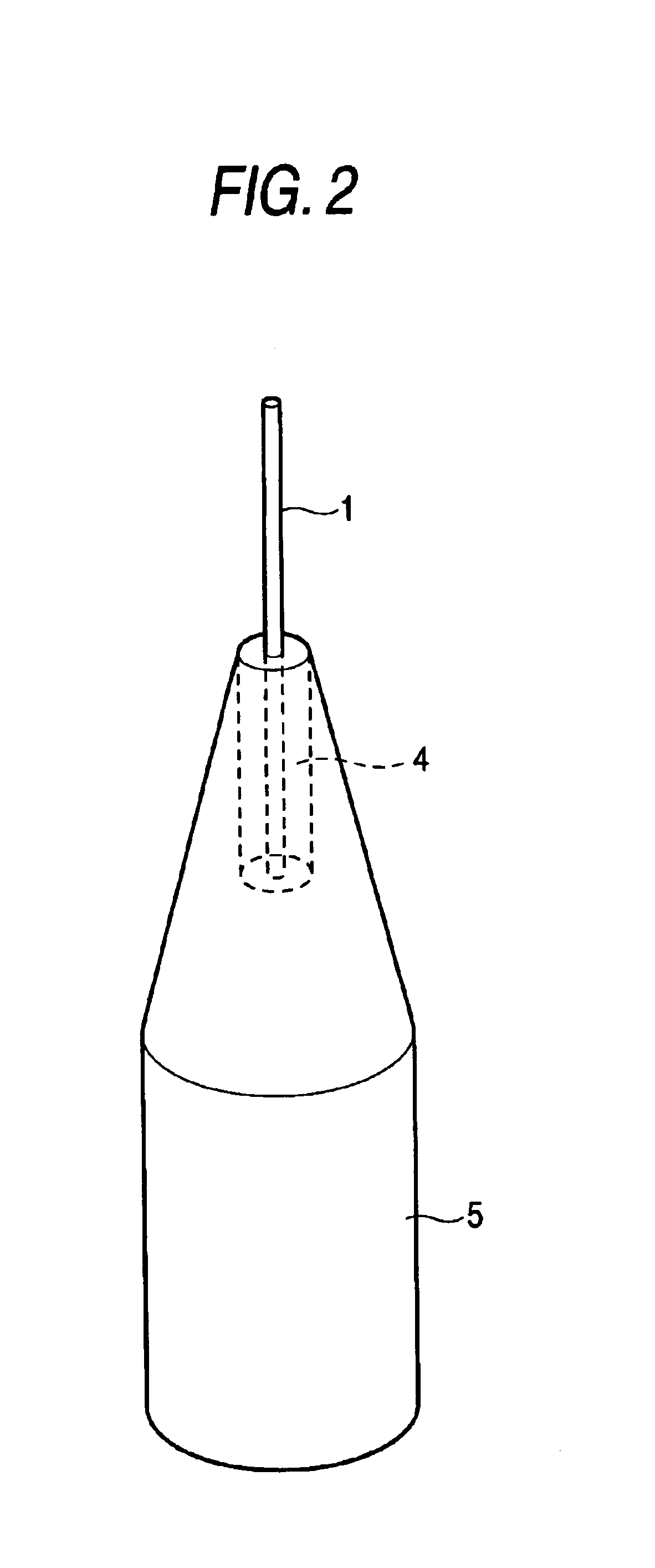Emission source having carbon nanotube, electron microscope using this emission source, and electron beam drawing device
a carbon nanotube and emission source technology, applied in the manufacture of electric discharge tubes/lamps, instruments, instruments, etc., can solve the problems of inability to observe sufficiently high accuracy, increase the cost, and difficulty in compact device construction, so as to reduce the electrical resistance in the joining portion, increase the amount of electrons supplied to the electron emission site, and prevent the increase of the field emission threshold voltage
- Summary
- Abstract
- Description
- Claims
- Application Information
AI Technical Summary
Benefits of technology
Problems solved by technology
Method used
Image
Examples
embodiment 1
[0026](Embodiment 1)
[0027]FIG. 2 shows an emission source in accordance with the present invention. The emission source in accordance with this embodiment has an electrically conductive needle 5 having a micro hole at its tip, an electrically conductive joining material 4 having a melting point lower than that of the electrically conductive needle and arranged in the micro hole, and a carbon nanotube 1 attached to the electrically conductive joining material. Thus, the problem with respect to the joining property of the carbon nanotube and the electrically conductive needle in the emission source can be solved, and the carbon nanotube and the electrically conductive needle can stably come in ohmic contact with each other.
[0028]A metal or carbon excellent electrical conductive property, thermal conductive property and oxidation resisting property, and having a relatively high melting point, is preferable as the material of the electrically conductive needle for attaching the carbon n...
embodiment 2
[0033](Embodiment 2)
[0034]FIG. 4 shows an emission source in accordance with this embodiment The emission source in accordance with this embodiment is constructed such that the carbon nanotube of the emission source described with reference to the embodiment 1 is coated with several layers of an electrically conductive material having a melting point higher than that of the electrically conductive joining material (coating layers are arranged). In accordance with this construction, even when the wettability of the electrically conductive joining material with the carbon nanotube is not so good, the wettability can be improved as a whole and the joining reliability can be raised by nipping a material having good wettability with both the electrically conductive joining material and the carbon nanotube. Further, the ion resisting impact property can be further improved by arranging a coating layer around the carbon nanotube. In this case, when the layer (coating layer) for coating the...
embodiment 3
[0040](Embodiment 3)
[0041]FIG. 5 shows an emission source in accordance with this embodiment.
[0042]The emission source in FIG. 5 is constructed such that this emission source has an electrically conductive plate 5 having a sharp tip shape (tip portion) and a micro hole in its tip portion, an electrically conductive joining material 4 having a melting point lower than that of the electrically conductive needle arranged in the micro hole, and a carbon nanotube 1 attached to the electrically conductive joining material. With respect to the shape of the electrically conductive base material for attaching the carbon nanotube, the tip of the electrically conductive plate is preferably sharp to a certain extent, since an electric field is easily concentrated onto the tip as the tip shape is sharpened.
PUM
| Property | Measurement | Unit |
|---|---|---|
| melting point | aaaaa | aaaaa |
| thickness | aaaaa | aaaaa |
| diameter | aaaaa | aaaaa |
Abstract
Description
Claims
Application Information
 Login to View More
Login to View More - R&D
- Intellectual Property
- Life Sciences
- Materials
- Tech Scout
- Unparalleled Data Quality
- Higher Quality Content
- 60% Fewer Hallucinations
Browse by: Latest US Patents, China's latest patents, Technical Efficacy Thesaurus, Application Domain, Technology Topic, Popular Technical Reports.
© 2025 PatSnap. All rights reserved.Legal|Privacy policy|Modern Slavery Act Transparency Statement|Sitemap|About US| Contact US: help@patsnap.com



